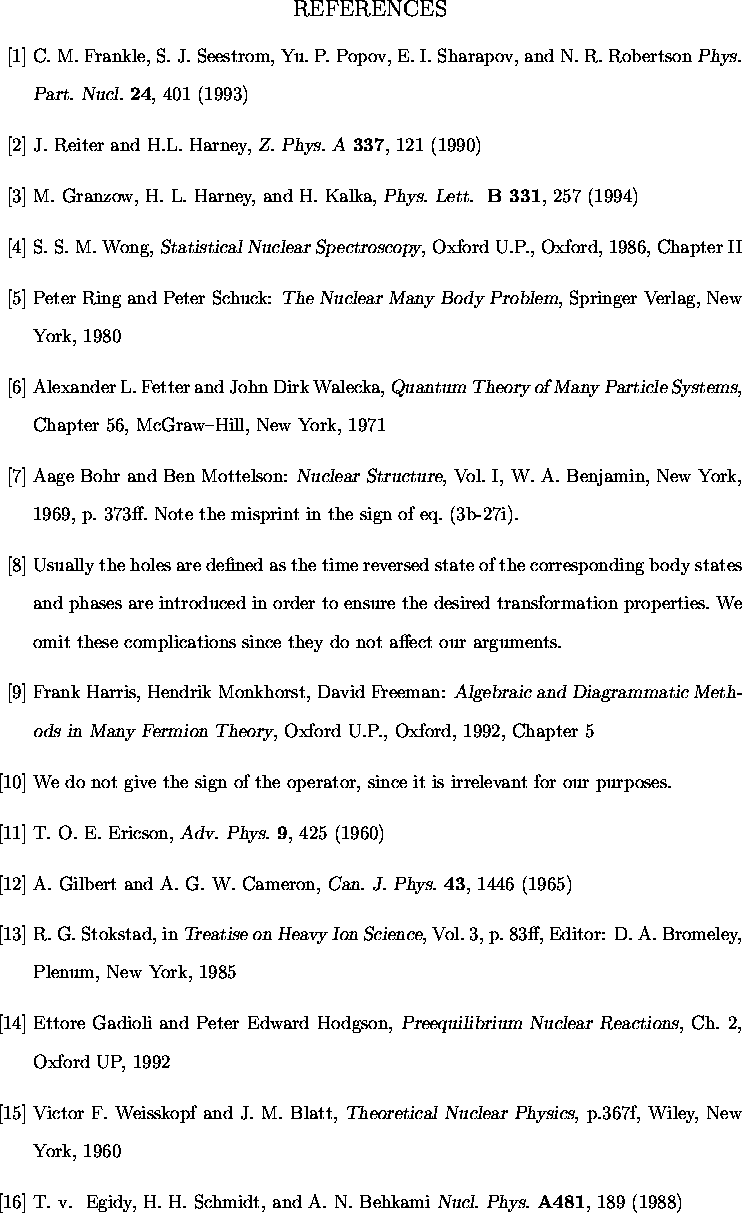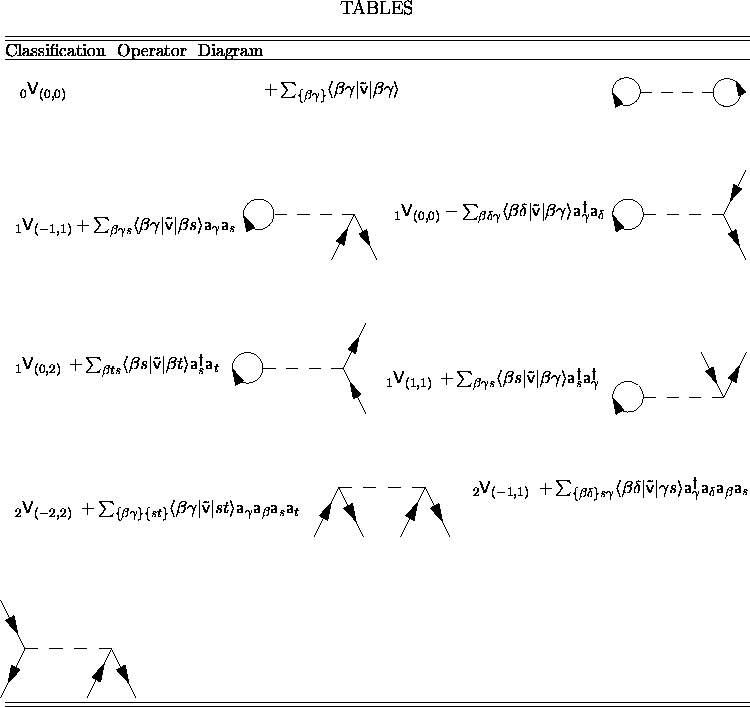Let
and f a function that is completely symmetric in the arguments
The matrix elements vanish unless the
In eq. (3.8), consider the special case of ![]() :
:
![]()
Let ![]() be
be
![]()
and f a function that is completely symmetric in the arguments ![]() . The restricted sum of eq. (B1) can be written
as the unrestricted sum
. The restricted sum of eq. (B1) can be written
as the unrestricted sum
![]()
The matrix elements vanish unless the ![]() all appear
in
all appear
in ![]() . Consider a term that satisfies this
condition. There are
. Consider a term that satisfies this
condition. There are ![]() ways in which the indices r
that agree with one of
ways in which the indices r
that agree with one of ![]() can be distributed over
the postions
can be distributed over
the postions ![]() . Therefore, imposing the requirement that the
first
. Therefore, imposing the requirement that the
first ![]() indices
indices ![]() should agree with
should agree with ![]() (up to a permutation) one obtains
(up to a permutation) one obtains

Here, the restriction ![]() means that none of the indices
means that none of the indices ![]() ,
,![]() , is allowed to
coincide with any one of the indices
, is allowed to
coincide with any one of the indices ![]() ,
, ![]() . The short
hand notation
. The short
hand notation ![]() means the
same. Eq. (B4) is obviously the same as
means the
same. Eq. (B4) is obviously the same as

which is easily generalized to eq. (3.9).

Table i: Two-body interaction in the exciton picture.

Table i: (Continued) Two-body interaction in the exciton picture.